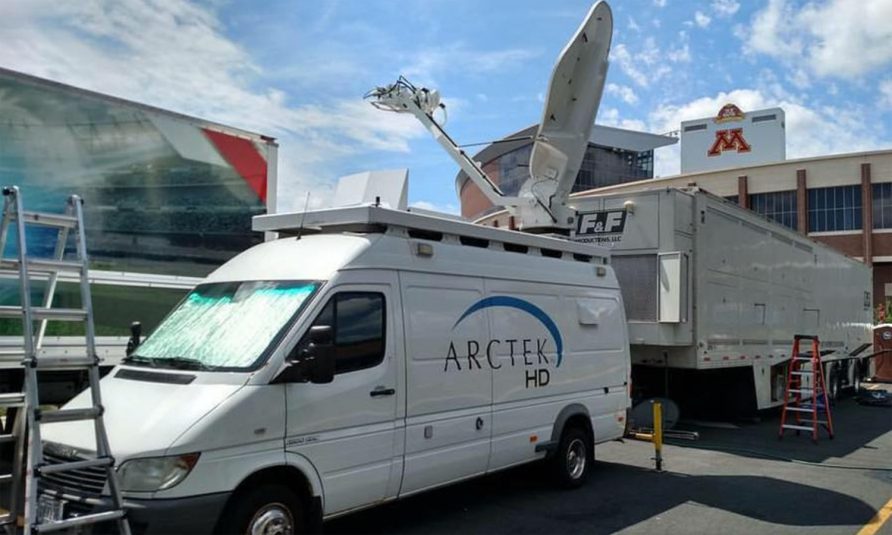SVG Sit-Down: ARCTEK Satellite Productions CEO Brian Stanley Sees Satellite Industry as ‘Healthy,’ ‘Vibrant’
As IP and at-home production rise, does satellite still have a place in broadcast plans?
Story Highlights
IP and fiber have become the darlings of the transmission world, stealing all the headlines and leading discussions on the future of content delivery in a broadcast environment. In the meantime, the old reliable mainstay, satellite, continues to be a major player.
However, with file-based workflows becoming the norm and IP infrastructures creeping closer as the standards near resolution, will satellite maintain its presence in the field? ARCTEK’s Brian Stanley sure believes so. SVG sat down with the owner/CEO of the Minnesota-based television-logistics company to discuss the state of satellite and what excites him about the technology’s potential for delivering content in a multiplatform world.
Do you consider the current state of the satellite uplink transmission business healthy? Why?
It’s a very healthy industry. It’s a very vibrant industry. It’s a very traditional industry. It’s a proven technology that is maybe overlooked right now with a lot of the emerging technologies, but it’s a robust, quality product.

Brian Stanley expects to see multiple feeds going to four or five different networks out of one satellite truck.
We’re busy and other companies that provide satellite services are busy. It’s a product that’s used but a topic that’s not discussed when we’re talking about bandwidth usage and getting content delivered.
What do you view as satellite’s greatest advantages over fiber and other up-and-coming technologies, such as IP and bonded-cellular?
The main thing is the flexibility of ordering a satellite truck and satellite time. There’s no construction time. There’s no up-front fee to get a truck on your event. You call a truck company, you order a truck, get some satellite time, and you’re there. You don’t need months in advance to get the bandwidth installed in that venue.
You will also have onsite an encoder tech and a satellite tech that can manage that signal. We’re not e-mailing video. We are delivering video to the masses. So the more qualified people who can take care of that video and ensure that that video is going to be transmitted correctly without issue, the better off the whole broadcast is going to be.
How has the increase in at-home/REMI productions affected your business and the industry as a whole? Can satellite still play a significant role in those productions in the future?
Absolutely. With the compression technology ever evolving and the development of HEVC compression, we’re going to be able to put a very high-quality HD signal; 10, 20 sources on a transponder and it’s still going to be a very high-quality delivery back to the control room. As the compression technology continues to evolve, the number of cameras and the quality of those broadcasts are going to get better and better.
One thing I’ve been thinking is that I’m not going to be an uplink company in five years. I’m going to be an encoding company that just happens to have an uplink on the top.
What are some of the most significant opportunities you see for the industry today? What excites you for the next two or three years of satellite?
What excites me about the future is multiple sources coming from one venue. For example, we’re doing motocross all across the country, and we’re putting up four signals on one transponder. We’re doing a clean feed, the [broadcast] feed, international feed, and a sponsored feed for the different outlets taking this. That’s really cool.
[At-home production] is one aspect of multiple feeds, but we can do multiple feeds out of a satellite truck in a mux situation, going to four or five different networks out of one truck. That’s where I see the satellite industry going: more feeds out whether it’s for at-home or for delivering to multiple networks.
